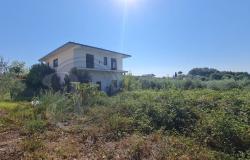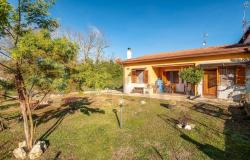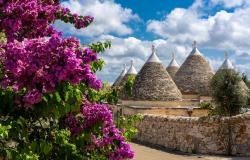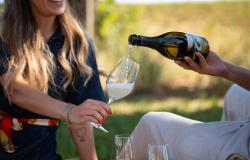The regions of Veneto, Friuli - Venezia Giulia and Trentino- Alto Adige, cover the North East part of Italy between the Alps and the Adriatic Sea, bordering with Austria and Slovenia.
Veneto
While Veneto’s stunning capital Venice overshadows almost everything else in the region, Veneto is also lucky to include within its borders the stunning Dolomite mountains, Lake Garda, many spas and seaside resorts, and several other great citta d’arte (cities of art). Its architectural heritage includes the unique buildings and bridges of Venice, many of Palladio's villas, Verona's arena - an ancient Roman amphitheatre traditionally reserved for opera – and the thermal baths at Abano Terme.
Venice is the regional capital and was built on 118 islands within a lagoon in the Gulf of Venice. Like a piece of fine embroidery lingering on the water, the city is a unique wonder and one of the most visited Italian cities. Throughout the Middle Ages, under the leadership of successive doges, Venice became the first naval power in the Mediterranean and expanded its power and influence throughout the Mediterranean up to Constantinople, establishing a strong state that was independent until 1797, when Napoleon crushed the free republic and sold it to Austria.
Other important cities are Verona, Padua, Treviso, Belluno, Rovigo, and Vicenza.
The region is circled in the North by beautiful alpine summits (Marmolada, Monte Antealo, Tre Cime di Lavaredo, Monte Cristallo) and delimited by the coastline in the South of the Adriatic sea, which is interrupted by the mouths of many rivers, canals and lagoons and is characterised by sandy beaches. In between, the vast part of the territory is a plain, with low hills of volvanic origin, the Monti Berici and the Colli Euganei.
The population is concentrated in the Southern part which is the heart of the economy of the region. The regional economy, which used to depend entirely on agriculture, is now highly oriented towards the high-tech industry, however, many people are still working in agriculture in farms specialized in the cultivation of maize, barley, soy bean and sugar-beet, fruit, vegetables and vineyards producing highly renowned wines. In fact, Veneto is famous for prestigious wine production of very old origins, which nowadays produces excellent DOC wines, among which the Valpolicella, the Gambellara, the Merlot, the Pinot and the Sauvignon. Finally, fishing is also an important resource, as well as the many food-processing industries.
Unsuprisingly, Veneto has variety of regional dishes which combine fish and sea food from the Garda Lake and the Adriatic, with cheeses, salamis and polenta typical of the mountains cuisine. Amongst the most renown dishes are Sarde in Saor, Baccalà mantecato, Brodo di Pesce as well as polenta con Osei, Fegato alla Veneziana, Risi e Bisi.
Friuli - Veneza Giulia
Friuli-Venezia Giulia embraces a variety of environments and landscapes, art, medieval villages, imposing castles, precious museums and archaeological sites.
The region was formed in 1947 through the union of the province of Udine with the area of the former region of Venezia Giulia that had not been annexed by Yugoslavia. The province of Trieste was added in 1954 and in 1963 Friuli–Venezia Giulia was given limited autonomy as a result of the many historic, ethnic and linguistic differences that have developed over the centuries. The Friulan language is spoken throughout the region, considered by some linguists to be a dialect of Italian, and by others a completely separate language.
Trieste is the capital of the region. The city became Mitteleuropa's gateway to the East under the Austrian Hapsburgs dominion, when it was declared a free port. Immigrants flocked here from all over the Mediterranean, giving Italy's easternmost city a cosmopolitan air matched only by Naples at the time. Today, its spacious boulevards, handsome buildings and vaguely dowdy magnificence make it something of a Vienna-By-The-Sea. Other cities are Gorizia, Pordenone and Udine.
With a territory extending from the Alps in the north to the Adriatic Sea in the south, the region has a rich geographical morphology, with vast plains along the coast toward the south as well as hilly and mountainous areas towards the North.
Ship and boat building in Trieste and Monfalcone take first place among the region's economic activities. Trieste is also the headquarters of the largest insurance company in Italy, Generali. There are many medium- and small-sized industries in the chemical, textile silk, paper and furniture sectors. However, farming is the main source of occupation with cereals, potatoes, and grapes being the leading crops, and dairy cattle and hogs are raised the production of renowned wines such as local Pinot and Tocai wines.
Following its conquest by the Romans, from the 6th century onwards the histories of Friuli and Venezia Giulia followed separate paths: Friuli passed from the Lombard Duchy to the Patriarchate of Aquileia to end up as part of the "Serenissima" Venetian Republic; while with Trieste, along with Gorizia, Venezia Giulia were pulled into the political sphere of the Habsburgs. It is interesting to note that while Friuli became part of the Kingdom of Italy in 1866 (Third War of Independence), Venezia Giulia only became part of Italy after the First World War. But the Second World War later led to the loss of a large part of Venezia Giulia, and Trieste was only to return to Italy definitively in 1954.
All this to and fro between different administrative domains and cultures has led to a rich variety of local traditions, with ceremonies and events of an ancient flavour and a rich selection of specialty foods including flavoursome cheeses and exceptional salamis along with famous wines - a true joy for the most refined of palates.
Trentino - Alto Adige
Trentino-Alto Adige with over 400 castles and stately homes, offers a unique combination of natural beauty and cultural heritage.
It is an autonomous region in the far north of Italy along the border with Austria. The region is divided into two autonomous provinces: the Italian-speaking Trentino and the largely German-speaking Alto Adige/Südtirol (South Tyrol). The region was part of Austria-Hungary until its annexation by Italy in 1919. Three language groups co-habit in Alto Adige: German (spoken by 69%), Italian (around 27%) and Ladin (4%) in the Gardena and Badia valleys.
The regional capital is Trento, known for its fine Romanesque cathedral and 13th century Castello del Buonconsiglio. Bolzano the capital of Alto Adige is the gateway between the two provinces and is characterized by a Tyrolean atmosphere.
The nature reserves of Alto Adige are among the most visited in Italy. The region lies among mountains and lakes, with its territory covering a large part of the Dolomites and the southern Alps, and is crossed by the Adige, Italy's second longest river. There are spectacular views, endless meadows, valleys and mountains that create a remarkable natural environment. Lake Garda creates a microclimate which results into Trentino, having a Mediterranean flora (olive, live-oak and lemon trees), despite being the northernmost region in Italy.
With its "Dolomites Superski" pass, Alto Adige is the gateway to the most extensive ski area in all of Europe with 1200 km of slopes distributed over 12 different areas. Madonna di Campiglio is the chief resort in Val Meledrio.
The fertile valleys of Trentino-South Tyrol produce wine, fruit, dairy products and timber, while its industries include paper, chemical and metal production.
The mountains and spectacular valleys (Val di Sole, Val di Non and Val Gardena) comprise the Region's main economic resource, attracting both winter and summer tourism. Another important resource of Trentino-Alto Adige is its many hydroelectric reservoirs, which allow energy to be generated and exported. Various industrial sectors have developed in the region, including woodworking, mechanical engineering and metallurgy, mainly consisting of small businesses distributed uniformly throughout the territory. A characteristic local product is Trentino porphyry, a stone that is extracted and worked in the Valle di Cembra and then sent to places all over the world where craftsman, often originally from the same valley, transform it into high-quality urban fixtures. This industry, and other allied ones, has become one of the pillars of the region's economy.
The region also boasts some excellent Merlot, Cabernet and Pinot wines while the cuisine is a creative mixture of Austrian and Italian with dishes such as Apple Strudel and Risotto al Teroldego.









